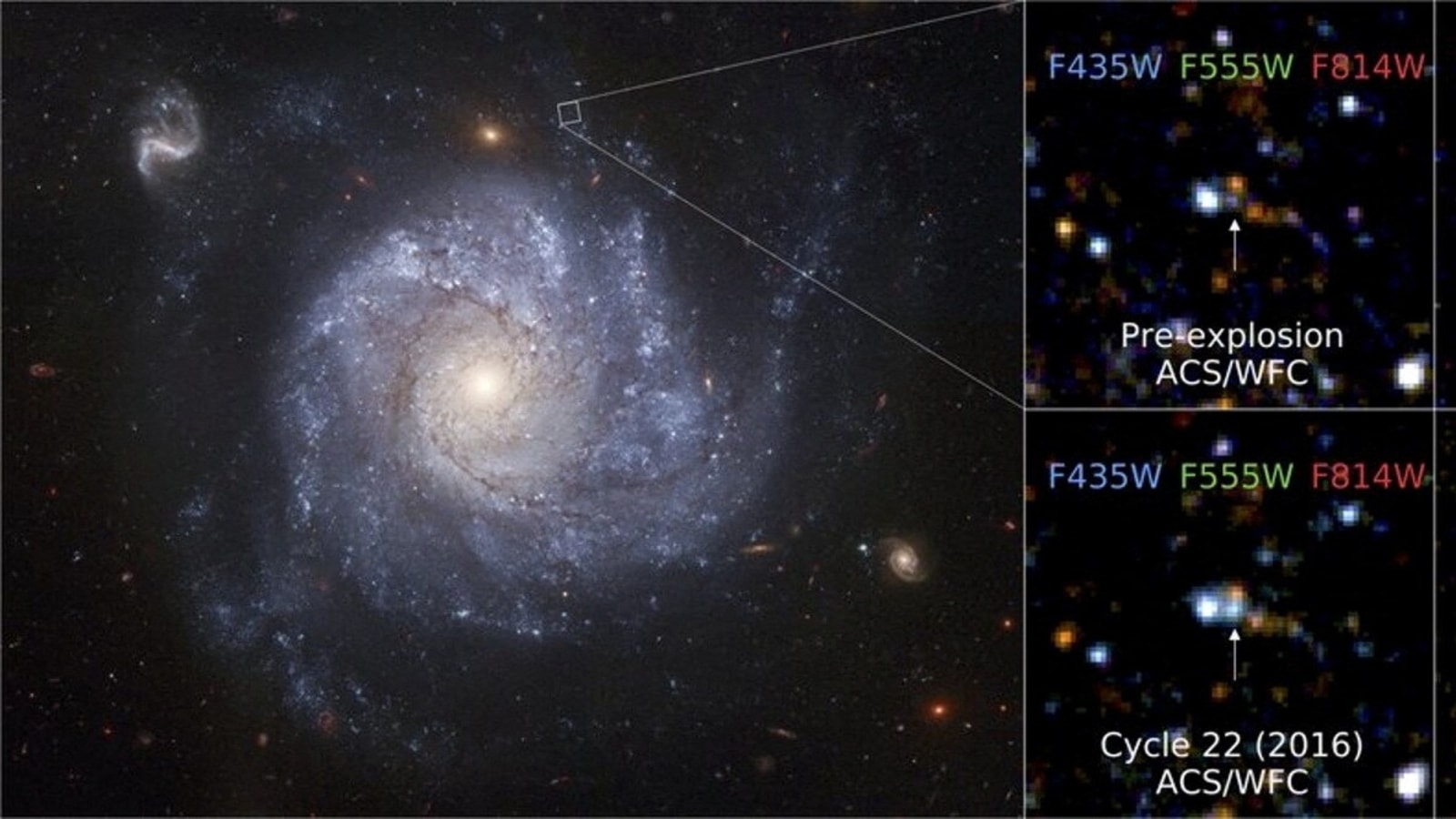 Satisfy the 'zombie star' that survived a supernova blast | World News
[ad_1]
(*5*)(*4*)
Satisfy the 'zombie star' that survived a supernova blast | World News
[ad_1]
(*5*)(*4*)
Astronomers have noticed in a fairly close by galaxy a star that not only survived what ordinarily need to have been particular demise - a stellar explosion identified as a supernova - but emerged from it brighter than prior to the blast.
Satisfy the "zombie star."
The star at concern, noticed with the Hubble Place Telescope, is a sort acknowledged as a white dwarf, an extremely dense item with about the mass of the sunshine crammed into the dimensions of Earth. A white dwarf is the remaining main of a star that blew off a great deal of its product at the conclusion of its lifestyle cycle, as our sunshine is envisioned to do about 5 billion several years from now.
This white dwarf is gravitationally locked in orbit with yet another star - a pairing identified as a binary program - and with its sturdy gravitational pull siphoned off and included a very good offer of product from this regrettable companion.
That is exactly where the difficulty commenced. In undertaking so, the white dwarf arrived at a mass threshold - about (*9*).4 instances that of the sunshine - that brought on thermonuclear reactions in its main that manufactured it detonate in a supernova, an celebration that need to have killed it.
"We ended up fairly stunned that the star alone experienced not been wrecked but experienced truly survived and is brighter than prior to it exploded," claimed Curtis McCully, a senior astrodata scientist at California-based mostly Las Cumbres Observatory, guide creator of the investigation printed this thirty day period in the Astrophysical Journal.
"Through the explosion, radioactive product was generated. This is what powers the brightness of the supernova. Some of this product was remaining in excess of in the surviving remnant star and acted as gas to warmth the remnant," McCully additional.
This white dwarf resides in a spiral galaxy identified as NGC 1309, about 3 quarters the dimensions of our Milky Way. Like the Milky Way, NGC 1309 resembles a spinning pinwheel when seen from previously mentioned or under. The white dwarf is situated 108 million mild several years from Earth. A mild yr is the length mild travels in a yr - 5.9 trillion miles (9.5 trillion km).
There are several varieties of supernovae dependent on the dimensions and composition of the star and the electricity of the blast.
This star is supporting researchers far better recognize what are identified as "form Iax" supernovae. In these, a white dwarf encounters runaway nuclear fusion of carbon and oxygen following getting subject fairly speedily, as this a single did by thieving from its companion. But the explosion does not damage the white dwarf, leaving guiding an "undead" remnant.
"We have identified as these objects 'zombie stars' for this quite explanation. They died but not fairly. Early on, quite a few of the simulations of supernovae carried out by researchers fizzled out prior to they ended up in a position to blow up the complete white dwarf star. It really is enjoyable to believe that was telling us a thing about the real physics of these supernovas," McCully claimed.
Experts to day have detected about fifty of this form of supernova but until finally now ended up not able to pinpoint the surviving "zombie star" white dwarf.
Our sunshine is destined to turn out to be a white dwarf, the destiny of about ninety seven% of stars.
"At the conclusion of a star's lifestyle - for stars like our sunshine or a tiny even larger - the star operates out of gas in the main and commences to collapse to a white dwarf. Through this procedure, the outer levels of the star are puffed off into a nebula. The leftover main of the star is the white dwarf," McCully claimed.
Our sunshine are not able to turn out to be a zombie star, nonetheless, simply because it lacks the requisite companion star.
(*(*9*)*) (*5*)[ad_2]

No comments:
Post a Comment